Swimsuit: description and varieties, planting and care

The bather is a perennial plant that can grow up to 1 m in height, depending on the species. It is also called the trollius (or troll flower). You can often hear how the swimsuit is called the Siberian rose, kupavka. Behind all these names is a beautiful, graceful plant worthy of becoming an adornment of any garden.

Peculiarities
You can contemplate this plant from May to June, it happens even in city parks to observe a modest but attractive flower with a spherical head. It is this shape of the flower that made the swimsuit popular for growing in the garden. It is difficult to remember another such plant, and the bright (in most cases) colors add points to the perennial. According to Scandinavian legends, the bather was especially appreciated by forest trolls, it became the favorite flower of magical creatures. The Russian name is most likely associated with the Agrafena Kupalnitsa, patronizing water bodies.
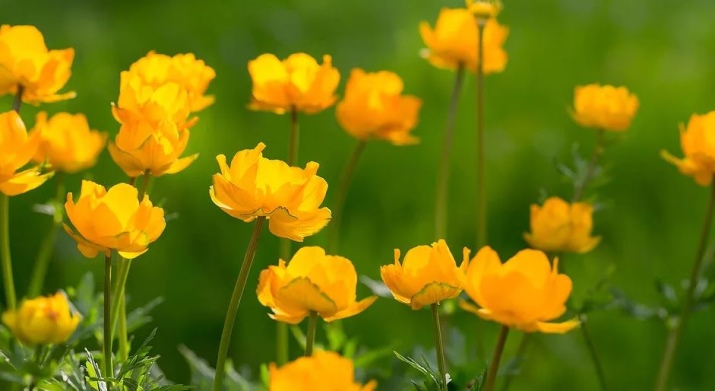
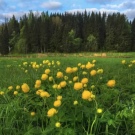
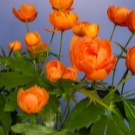
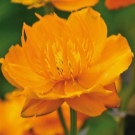


The plant is a herbaceous perennial, it belongs to the buttercup family. It grows in the northern hemisphere: in forests and on mountain slopes, as well as in meadows and river banks. In their natural habitat, you can count two dozen species of perennial, and gardeners use much less. The most popular type of Siberian rose can be considered the European swimsuit. Scientists have described in detail 29 plant species to date. 20 of them are growing in Russia. For the purpose of decorative garden decoration, 7 varieties and more than a dozen hybrids have been bred. Hybrid varieties have enviable immunity.
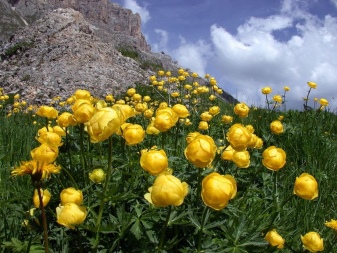
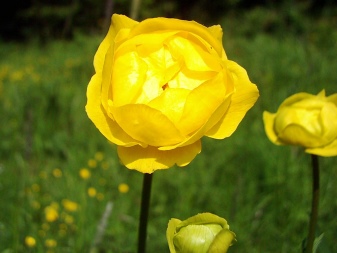
The description of the trollius is as follows:
- large, bright yellow and juicy orange flowers;
- the spherical shape of the flower - open or half-open;
- trollius leaves are palmate, have the color of summer grass;
- at the time of flowering, the Siberian rose thinns the barely perceptible aroma of freshness.
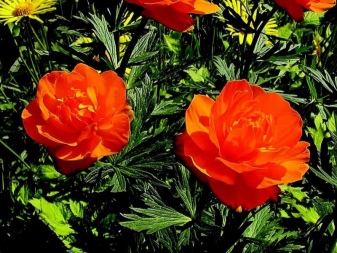

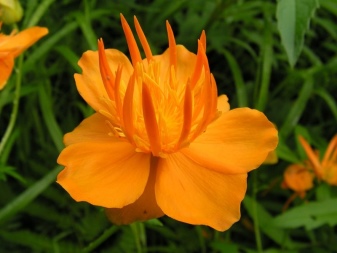
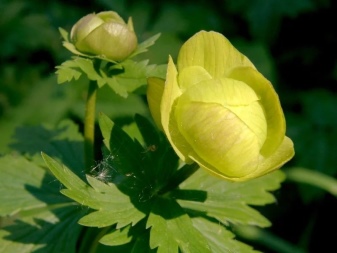
You need to know that the swimsuit is a poisonous flower. Its juice can cause burns on the skin and mucous membranes. Therefore, the entire planting process should be carried out with protective gloves. Despite the fact that the plant is considered poisonous, the medicinal properties of the bathing suit are also used in folk medicine, decoctions are prepared that help fight tumors and edema.
Types and varieties
There is a choice, and it attracts with its diversity. Name "Cultural" combines a series of garden forms and perennial species. Of course, varietal representatives have larger and brighter flowers.
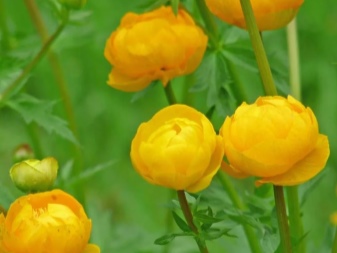
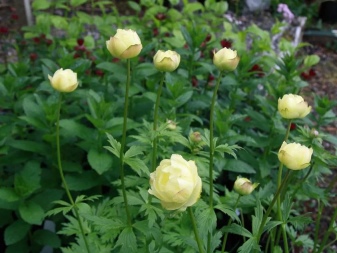
The most famous species of trollius is European... It is characterized by double, spherical, pale lemon flowers. Another name for the species is gourd. The Asian variety, which is a perennial with juicy orange single flowers, has also become widespread. The Chinese trollius has expressive orange flowers and is distinguished by its late flowering appearance. Today this plant is listed in the Red Book, it is threatened with extinction.
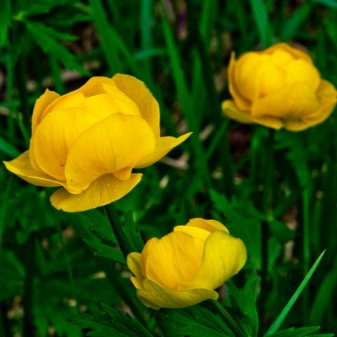
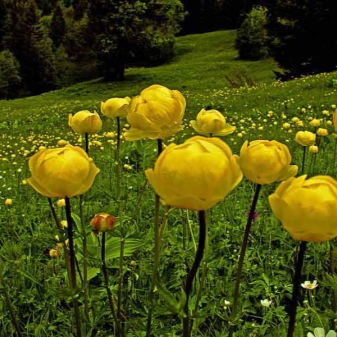
Similar to him Ledebour, but its flowers are larger. A dwarf swimsuit, which resembles a large buttercup, stands apart in this row. In Central Asia and certain regions of Western Siberia, the Altai bathing suit grows. This is one of the most spectacular perennial species.

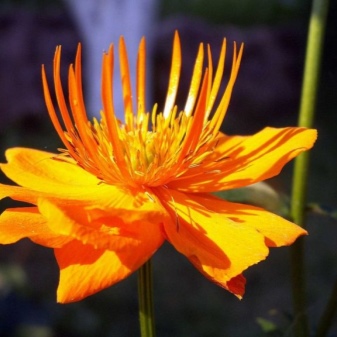
And it looks quite unusual against the background of the listed species purple swimsuit... Faded lilac flowers with yellow stamens seem delicate and defenseless. Such a plant would decorate any garden, but unlike its congeners, it is very demanding on growing conditions. It grows in a swampy environment, in places where glaciers are melting.
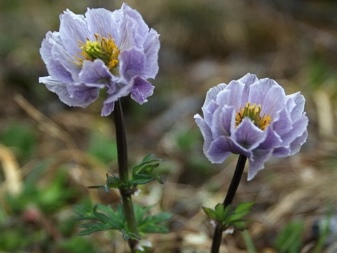
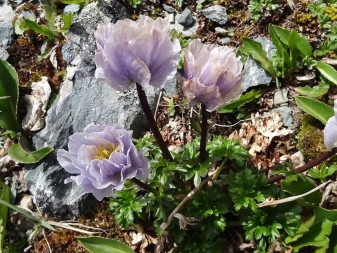
The following varieties are considered especially popular with gardeners:
- Cheddar - soft cream flowers and soft lemon stamens, a very graceful variety;
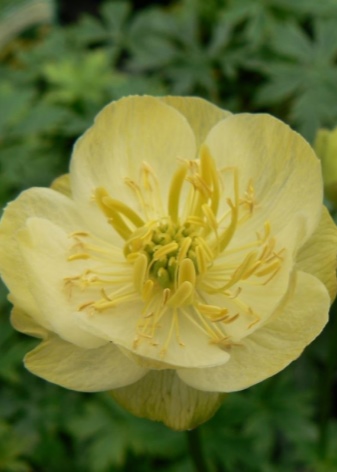
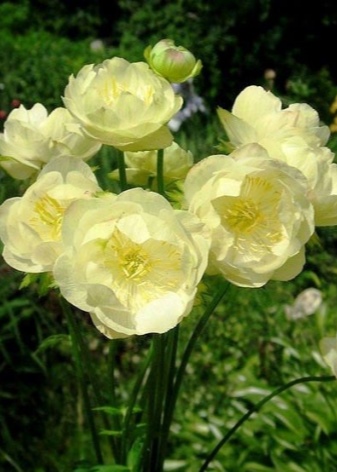
- Alabaster - flowers are spherical, with a cream shade, low, with dense dark foliage;

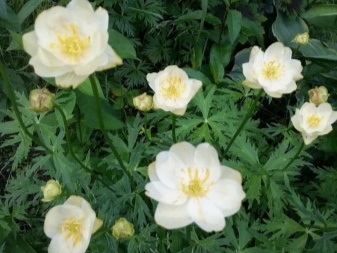
- "Orange princesses" - bright orange large heads;
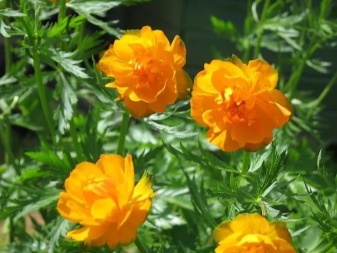
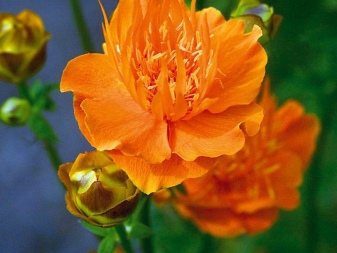
- "Canary bird" - faded, barely yellow flowers of a neat shape;
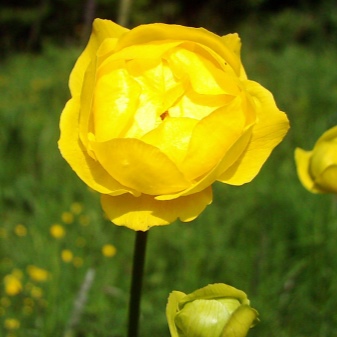

- Lemon queen has yellow or lemon-yellow flowers;
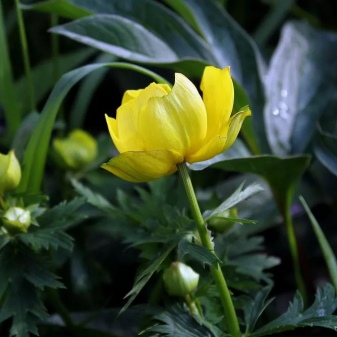

- "Golden Queen" ("Golden Queen", "Golden Queen") - late variety, blooms at the height of summer;

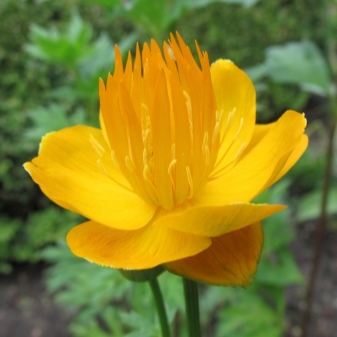
- New moon ("New Moon") - large, half-open, bright yellow flowers.

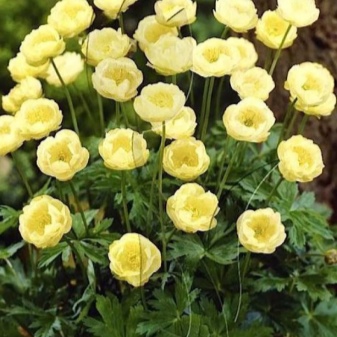
Each of the varieties will perfectly fit into the design of any site, it all depends on preferences and the chosen color scheme.
How to distinguish from buttercup?
Yellow flowers are the springiest. Think of coltsfoot, dandelions, and, of course, buttercups. Yellow traps heat, enhances flowering processes. And these "sunny" plants attract insects, they work on flowers, stimulating cross-pollination. So the swimsuit is the same herald of warmth, it blooms in late spring, the first days of summer (except for late varieties).It differs from the buttercup, its "relative", in size. Buttercup is very modest in comparison with the rather representative balls of the swimsuit. Trollius flowers do not open like buttercup heads. The difference between related plants is most obvious in the photographs.
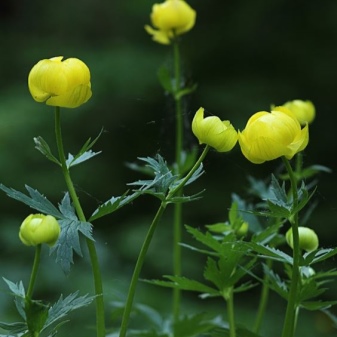
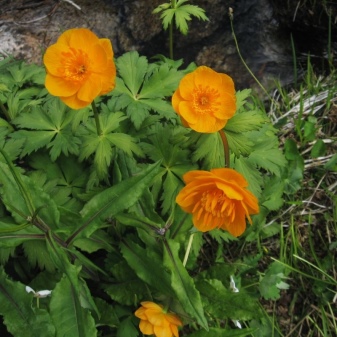
The subtleties of planting in open ground
There is no simpler way than to purchase ready-made seedlings and organize their planting in the garden. The Siberian rose does not make any special demands, but still remember that it loves moist soil. If you plant it in a dry place, leave no chance for a flower.

Optimal timing
The best time for disembarkation is not spring and autumn, but August. There are also frost-resistant varieties of the swimsuit, but you should not risk it - young plants should grow rhizome and get stronger even before frost... Again, what matters is what you choose to grow your trollius from. If from seeds, then in late autumn the seed can be planted in a container, kept in it in a room without heating. There, during the winter, the plants will undergo good stratification, and in the spring they will germinate.
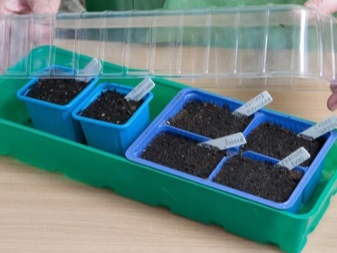
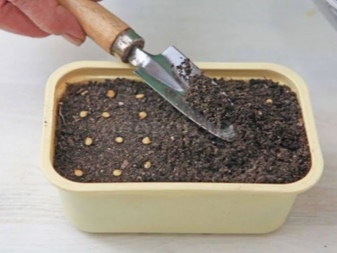
Even more correct advice is to send the seed to a bag with damp sand poured into it, move the bag to the refrigerator (in the vegetable compartment), keep it in it for 3 or even 4 months. In March, you can sow the seeds in the substrate and expect shoots at a temperature of 20 degrees.
Seat selection
Look for a location with diffused lighting. An excellent option for a swimsuit would be a place under tall ornamental bushes. Suitable for planting and rocky slide. It is important that the bright sun does not shine on the trollius for a long time, this is destructive for a perennial... You can plant a Siberian rose in an open flower bed, but in this case, the flowering will definitely be short-lived. The flowers themselves will not grow to their optimal size and will be faded. As for the soil, a medium loamy composition is preferable. There should be no stagnation of water on the territory. If you are planting a perennial in a sandy composition, add moss to the hole to help retain moisture. You can also fertilize the hole itself with a combination of peat and humus, as well as 15 g of nitrophoska.

How to plant
You can sow seeds, as noted above, at home (the option with a refrigerator is optimal). The grown seedlings are moved into the holes directly with an earthen lump. Dig holes at intervals of 40-50 cm. Deepen the root collar of the trollius by 2 cm. Cut off the leaves immediately so that rooting is successful. Expect young foliage 2 weeks after planting.Please note that the trollius does not like transplants very much, therefore, do not touch him for 9-10 years: he will quite comfortably settle in one place and will delight with stable flowering.

How to take care of it properly?
Competent landing in open ground is only half the battle. How the swimsuit will grow, whether its flowering will be long and bright, depends on the organization of care.
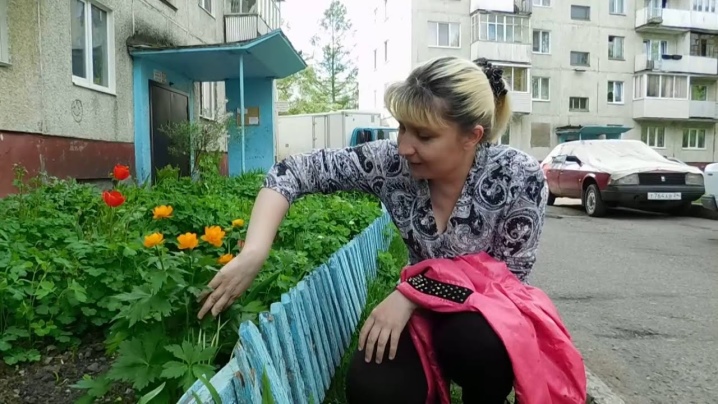
Watering
It is necessary to water the Siberian rose often, only without abuse. The perennial should be in moist soil, without stagnant water. If you overfill or overflow the bathing suit, it will immediately negatively affect the growth of the flower. Especially delicate is to treat a young bush - it is still vulnerable and sensitive. If summers are dry and hot, water more often. Stick to the scheme, do not skip "water procedures", do not increase irrigation volumes for no apparent reason. Remember to remove the weeds. To make the plant stronger, mulch the bush. Root moisture will not give the weeds a chance to stifle the plant. However, if the mulch frankly does not fit the design idea of the site as a whole, give it up. The soil should be loosened by 2, maximum 4 cm, not deeper (there is a risk of damaging the rhizome).
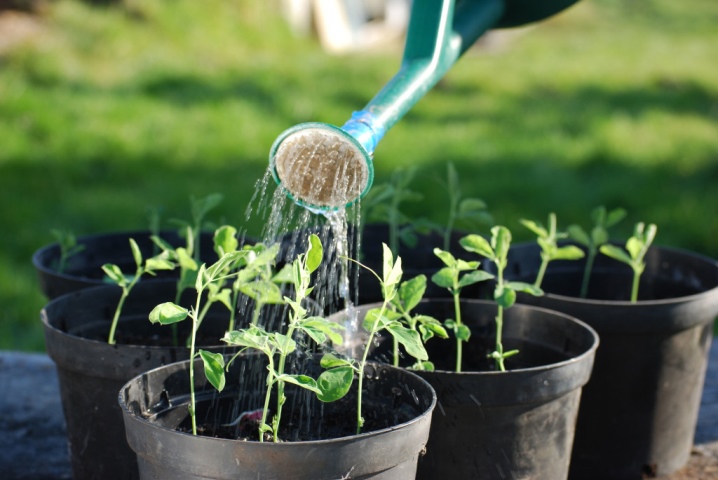
Top dressing
Large feeding is not needed, in this respect the trollius is unpretentious. To enhance spring bloom, fertilize before the flowers appear. And then after 2-3 weeks you need to carry out a new top dressing, the third will be in another couple of weeks. Use nitrophosphate for fertilization (5 g is enough for a bucket of water), urea (1 tablespoon per 10 liters of water). You can also use complex organic matter, for example, Agricole. Humus and peat will also be beneficial for perennials.
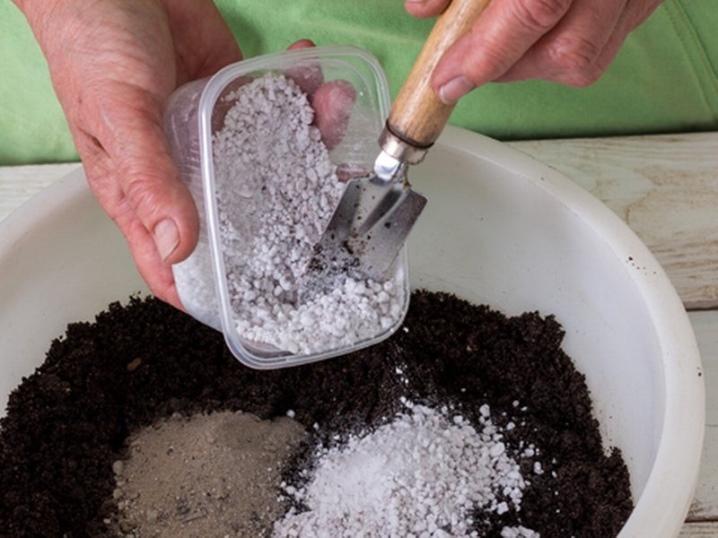
Transfer
As already mentioned, a trollius will live perfectly in one place for 10 years. Therefore, choose a landing site carefully, realizing that a whole decade of changes is not expected here. But there is also such an opinion: cultivars bloom in the second or third year, and during the flowering season they are transplanted to a permanent place. This is done in April-May or late August. If you are going to share a bush with a subsequent transplant, do not do it earlier than 6-7 years of plant life. A bather may experience stress during transplantation, and at this age she will be at least relatively ready for “relocation”.

Wintering
Trollius is considered a cold-resistant plant, therefore it calmly survives the winter in the garden without a covering layer. When the perennial leaves die off in October, it is better to cut them off. Leave only petioles a couple of centimeters long above the surface. They will protect the kidney, which is centered on the outlet. This bud for next year will give a peduncle.
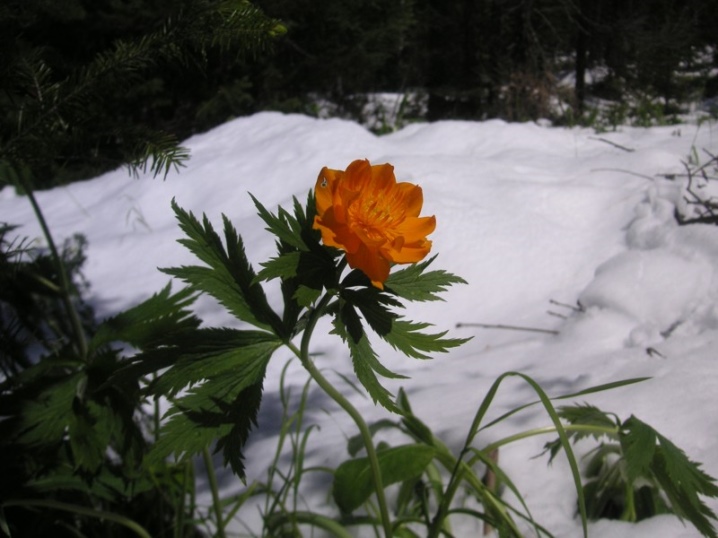
Reproduction methods
Breeding a perennial is possible by dividing the bush and sowing seeds. Any method can be successful. The seeds of the plant will ripen by autumn. You can sow them directly into open ground, but long-term stratification gives the best predictions for high germination. Therefore, sowing has to be done almost in winter. Loose soil with the possibility of air penetration is suitable for this business. The ideal option is as follows: 2 shares of peat, 2 shares of land, 1 share of sand.
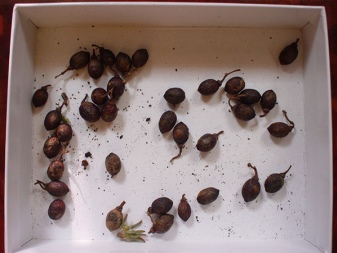
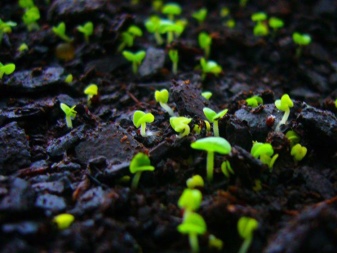
In the first days of May, you can wait for shoots. If at this time the weather is warm in summer, the flowers will need increased watering and shelter from annoying rays. When a couple of full-fledged leaves appear at the seedlings, it's time to dive them. Plant the sprouts 8-10 cm apart. Division of the bush:
- In the fall, the trollius needs to be dug up, divided into parts, delenki (each - with shoots and rhizomes).
- Each piece is planted in a place prepared in advance. Before frost, the bushes should root well. If you decide to start dividing a perennial in the spring, do it before the flowering stage.
- The material prepared for planting should not dry out. You need to plant delenki quickly. Embed the root collar by 2 cm.

Be sure to mulch young bushes, this will strengthen their survival rate in a new place and will not allow them to die in the first weeks.
Diseases and pests
Fortunately, the trollius is a strong and viable perennial that resists disease well. Insects rarely encroach on it. And to reduce the risk of injury, in the spring the swimsuit should be treated with ash. Subsequently, the ash will be replaced by complex mixtures. Possible diseases:
- Septoria. It manifests itself as gray-brown or orange spots of irregular shape with a yellowish frame. Black dots may be found on the leaves. Greens dry up and fall off ahead of time. Stems and plates are also deformed. You need to deal with this like this: destroy the affected area, treat the plant with copper sulfate or Bordeaux liquid. The plant may need to be transplanted to a new location. The old place needs disinfection.
- Smut. It is manifested by whitish growths and an obvious slowdown in trollius development. The drugs "Ferazim" and "Klad" can help.
- Nematodes. The swimsuit is struck, and this quickly manifests itself with brown spots, which darken over time. The leaves die off, the trollius lags behind in development, flowering does not occur. You can solve the problem with chemicals such as Heterophos, Phosphamide and Lindane.
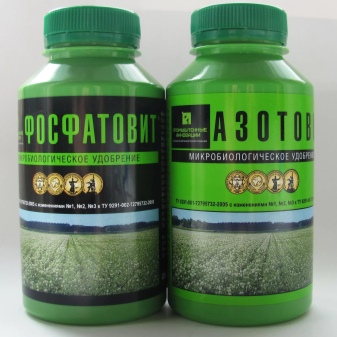
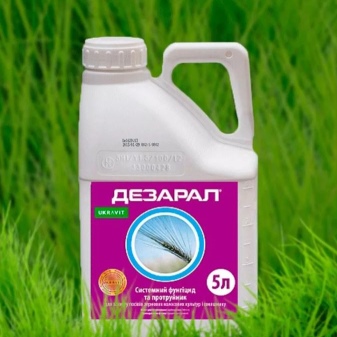
According to reviews, gardeners rarely encounter trollius diseases. In the fall, remove old leaves from a perennial in order to protect it from fungal diseases.
Use in landscape design
Stony hills can be decorated with stunted plants - the composition turns out to be elegant and laconic. If you grow high varieties of swimwear, then they are suitable for decorating edges, lawn corners and areas adjacent to the pond. The bather can grow alone - it is a self-sufficient plant. But it manifests itself perfectly in combination with primrose and cornflowers, delphinium and irises. Almost any flowers of purple and blue shades, canary and orange tones will be amazingly combined with trollius.
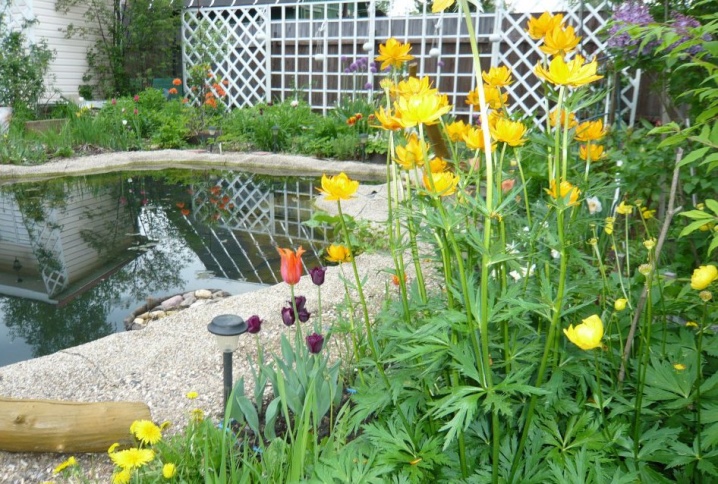
The presented photos show how you can decorate the site with a swimsuit.
- The neighborhood with irises is a vivid example of how two plants, in terms of color, feed each other. It is good to combine tall irises with undersized trollius varieties.

- A plant near an artificial reservoir looks very appropriate, gentle and even fabulous. If you don't want a very variegated drive area, surround the pond with a low bathing suit and faded small flowers of bluish-purple hues.
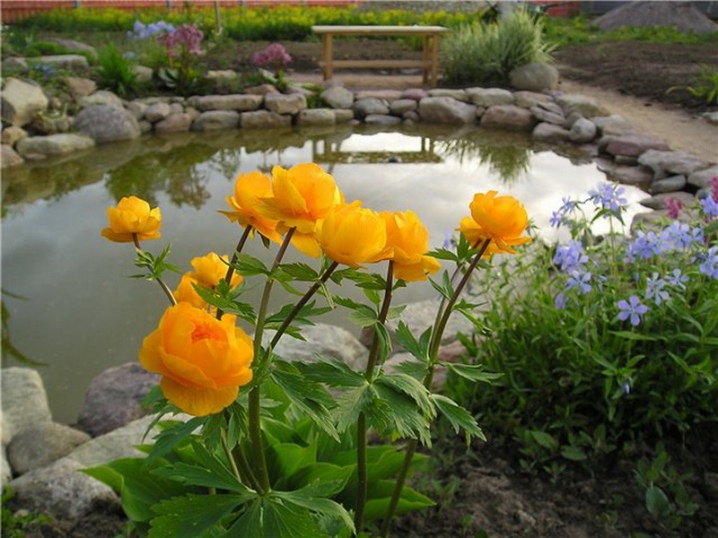
- A humble trollius in the lush bloom of its neighbors. And such an interesting option is also possible. It is interesting to look at such areas as we move from one object to another.
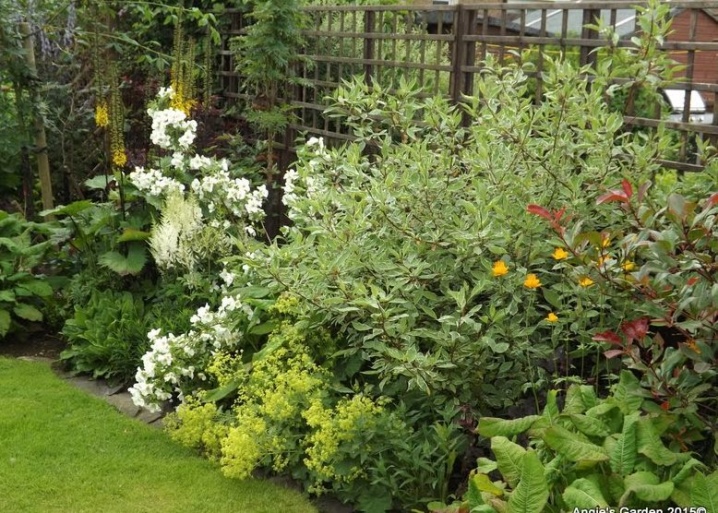
- The same popular color combination is yellow and blue. In one oval flower bed, two plants will look like a laconic, well-designed two-tone floral carpet.
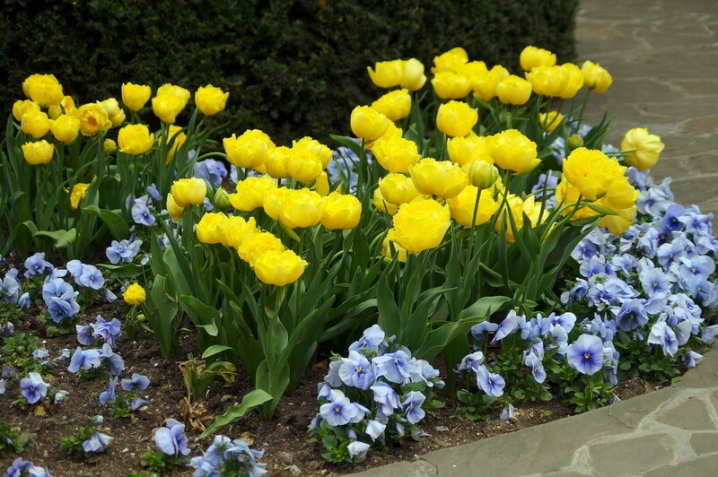
- If you like a bushy and lush bloom, this is a useful option to consider. Take tall swimsuit varieties.
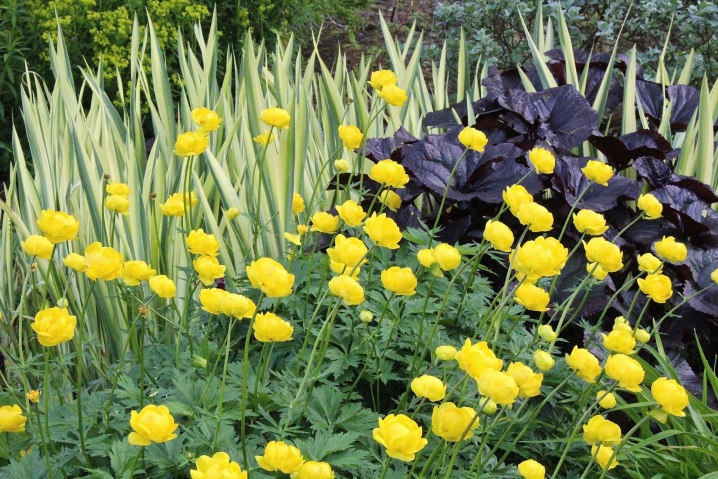
- The trollius surrounding the pond is a great solution. Perhaps the bottom blue tier of flowers is missing here, but this is a matter of taste.
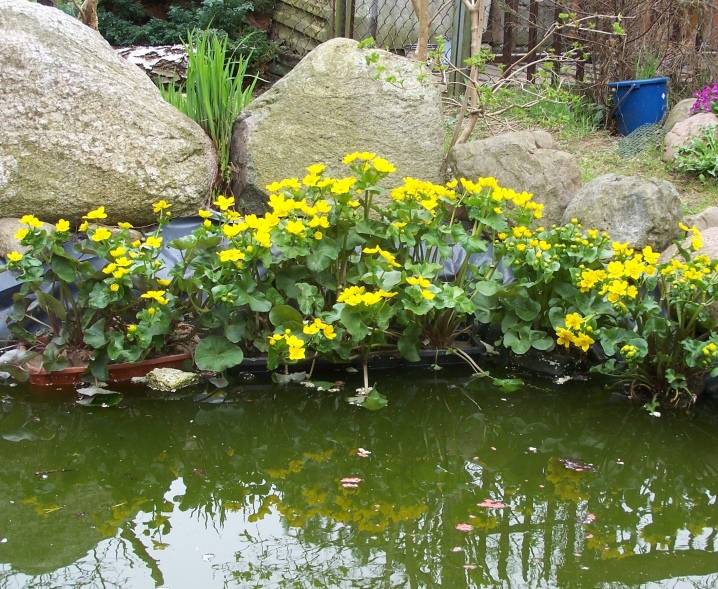
- In this colorful floral design, there may be a place for a swimsuit. Usually they take the flowers easier, but why not arrange a botanical experiment. Remember the importance of maintaining the layering of the disembarkation.
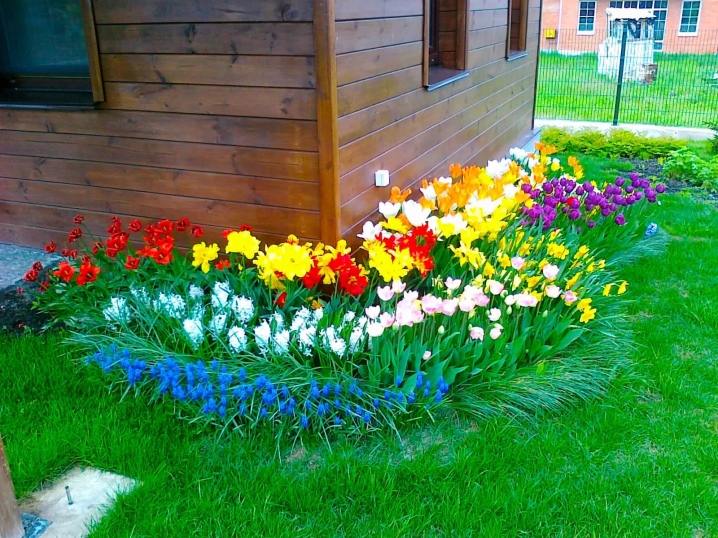
- The trollius also feels great in mono-landings. Yellow bushes will organically look along the path in the garden.
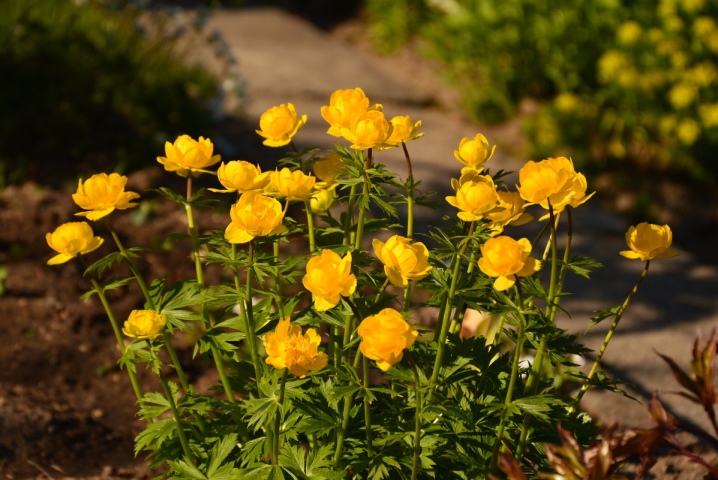
- Plant several varieties of trollius side by side. You can arrange a graceful color transition, but you need to focus on the possible height of growth.
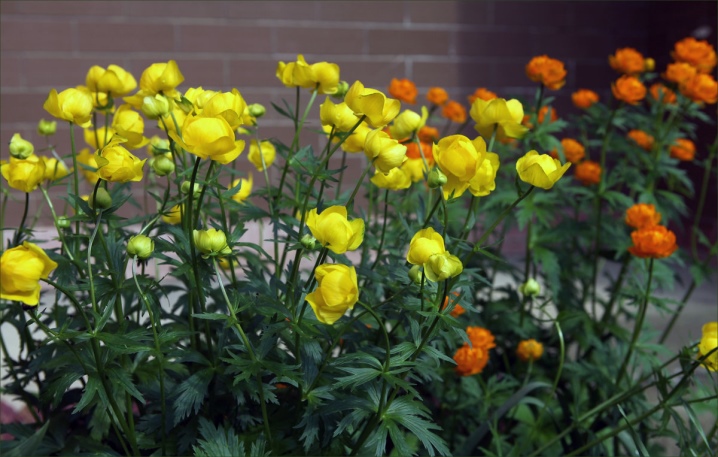
- If you got such light, greenish-cream varieties of a swimsuit, then they are also worthy of planting in separate bushes. Plants make the site more tender, add spring freshness to it.
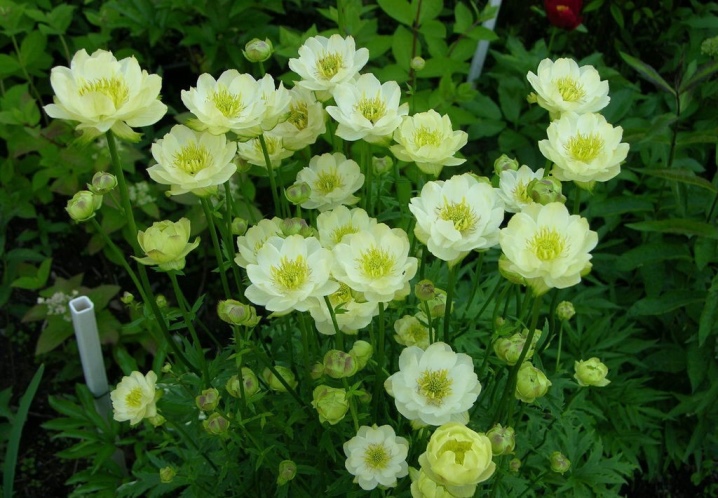
Boldly plant tall varieties in an array on the lawn, and undersized varieties will look favorably in clumps surrounded by stones. Add muscari and hyacinths, anemones to the trollius. In addition to blue, purple and yellow flowers, you can add plants of intense burgundy shades to the trollius. Purple flowers complement the delicate lemon swimsuit better, and bright purple - orange plant varieties.
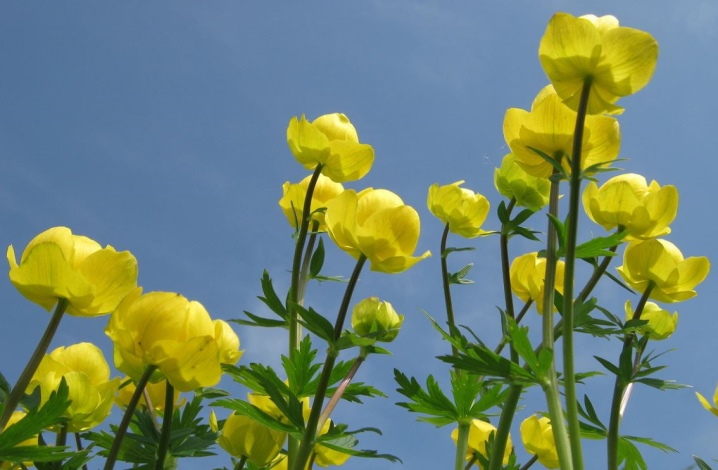
For information on how to properly care for a swimsuit, see the next video.







































































































The comment was sent successfully.